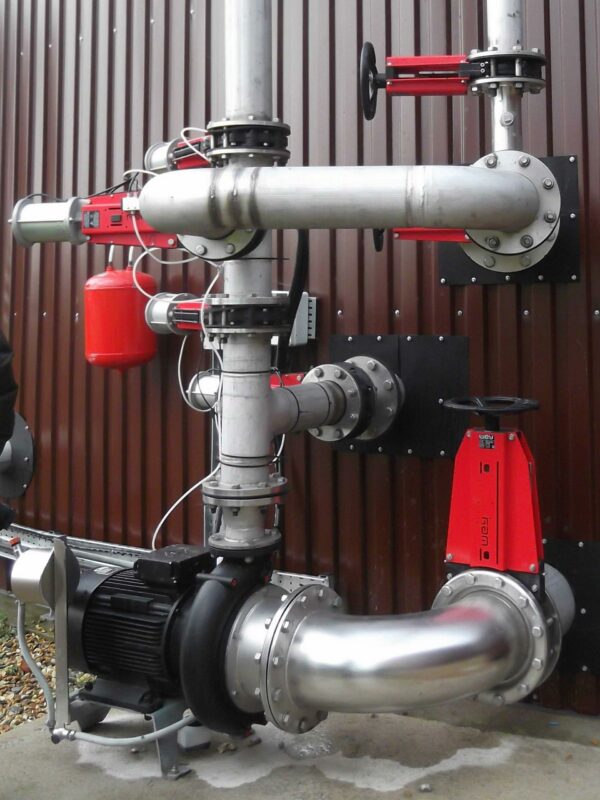Solution provider

Case
Bioenergy
Biogas
Waste-to-energy


Add the case to your visit request and let us know that you are interested in visiting Denmark
After evaluating the performance of the facility’s first digester, built a decade ago, engineering component specialists Hayley Group were consulted about the availability of an alternative, superior mixing system for its customer’s second digester; mixers that unlike those in first tank, would eliminate typical biogas process problems such as foam, blocking and crusting – and in doing so, help boost the levels of methane.
And with the unpredictability of food waste feedstock, dissolved solids (DS) at the food waste-to-energy facility are typically around 16-18% but can be as high as 22%. This was an area, that with lessons learned from blockages and downtime from the first digester, saw the clear need for a more robust mixing system for the second digester that could withstand the tough demands made upon it.
After carefully evaluating what would be best for the second digester, Hayley Group decided to go with a pump/mixing system from Landia.
Landia’s mixing system was chosen because of its reliability and gas-producing capability.
Utilising the chopper pump that Landia invented back in 1950, complete with venturi nozzles, the digester mixing system that is now producing such high levels of gas for the second digester, has an external knife system to continuously reduce particle sizes and keep solids in suspension.
Landia’s chopper pumps do not allow the build-up of material to happen, which previously had been an issue, where material such as plastics would inevitably float to the top where they’d form a blanket and then a crust.
Due to the new digester mixing system provided by Landia, Hayley Group has increased its biogas yields by an average of more than 43%.
With the new, superior mixing system from Landia, the increase per cubic metre in gas from the second digester is over 40%, even though it has 10% less capacity than the old tank.
On average, Digester 1 sees a feedstock intake of 118 tons of dry solids per day, which produces a gas flow of 27,000 Nm3 (Normal Meter Cubed per Hour) per day. In comparison, Digester 2 (10% smaller), sees a feedstock intake of 110 tons of dry solids per day, which produces a gas flow of 36,000 Nm3 (Normal Meter Cubed per Hour) per day.
On top of the increase in gas production, Landia’s pump/mixing system has lowered parasitic load and reduced energy consumed, with the Landia Digester Mixing System usually only requiring 20 minutes on and then 20 minutes off, compared to other systems which run 24/7.